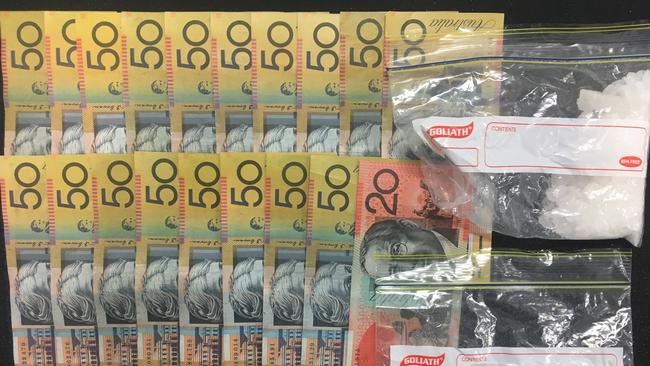Drug testing reveals Operation Ironside’s hit to SA meth supply
New drug testing has revealed meth use in South Australia hit record levels before a storm hit the state’s underworld.
SA News
Don't miss out on the headlines from SA News. Followed categories will be added to My News.
Methamphetamine and cocaine supply in South Australia was severely disrupted by the Operation Ironside police sting, wastewater testing results reveal.
While the latest official testing results from April showed methamphetamine consumption in Adelaide and regional locations was the highest in the nation, there was a sharp decrease recorded after the Operation Ironside raids in early June.
The April results show the pandemic-induced decrease in usage recorded last August had been eroded with SA’s methamphetamine consumption surging back to previous levels, especially in country regions.
The wastewater testing results reveal one country testing location – there are four in Adelaide and five in country regions – recorded the highest methamphetamine consumption figure in the nation.

The April figures also reveal alcohol and nicotine consumption increased in city testing sites but decreased in regional sites.
Ecstasy and heroin consumption decreased in city and regional sites but cannabis consumption in regional SA was the highest in Australia.
Detective Chief Superintendent Steve Taylor, the officer-in-charge of the Serious Crime Coordination Branch, said wastewater testing after the Ironside raids in June showed a “significant decease’’ in the use of both methamphetamine and cocaine.
“It was as we anticipated, there was a significant drop in their use because availability decreased,’’ Chief Superintendent Taylor said.
“The results once again show it is outlaw motorcycle groups and organised crime groups who are responsible for the supply of these drugs in South Australia.
“While the testing showed a decrease for the period following June, the latest results show a slight increase as other organised crime groups have moved in to supply drugs to the community.’’
Australian Criminal Intelligence Commission chief executive Michael Phelan said the methylamphetamine market was resilient market because consumption was widespread and strong in both the capital cities and regional locations.

“Methylamphetamine is a wicked problem because serious organised crime groups both import the finished product and precursor chemicals and domestically manufacture methylamphetamine,’’ he said.
‘Wastewater analysis provides a timely indication of both the extent of supply by serious and organised crime groups and also locations where they have a footprint.
“Sadly, the report shows that serious and organised crime groups will always find a way to supply illicit drug markets.’’
Mr Phelan said the wastewater data, when merged with other data including from the ACIC’s illicit drug data report and intelligence holdings, permitted the ACIC to analyse the ability of transnational and domestic serious organised crime groups to adapt to different market circumstances.
“Law enforcement agencies can commence some investigations in the knowledge that the impact on local drug consumption can be measured by wastewater analysis, government and health agencies can effectively allocate resources to priority areas, and the public can be informed of the level of harm caused,” he said.
Originally published as Drug testing reveals Operation Ironside’s hit to SA meth supply


